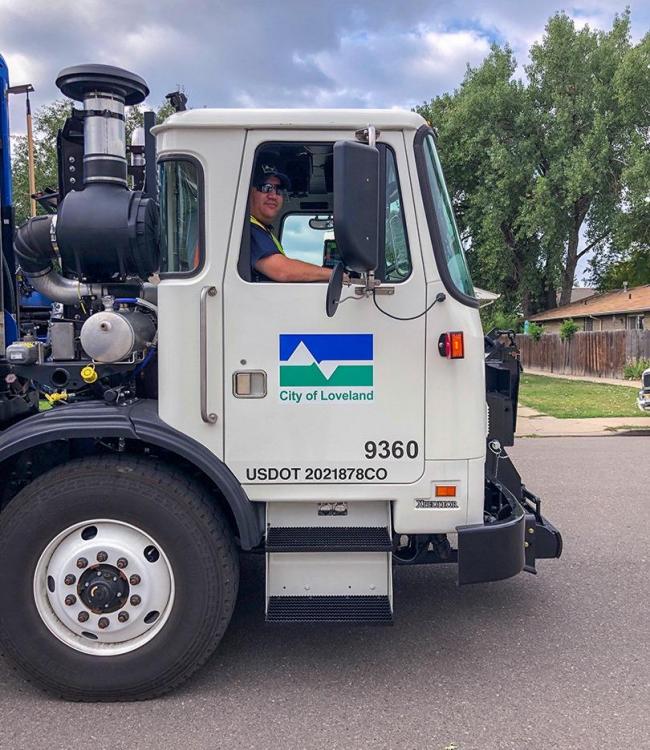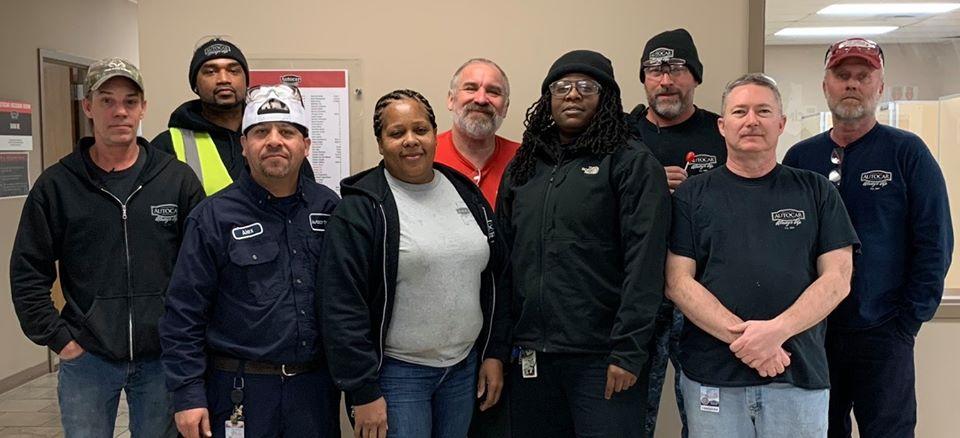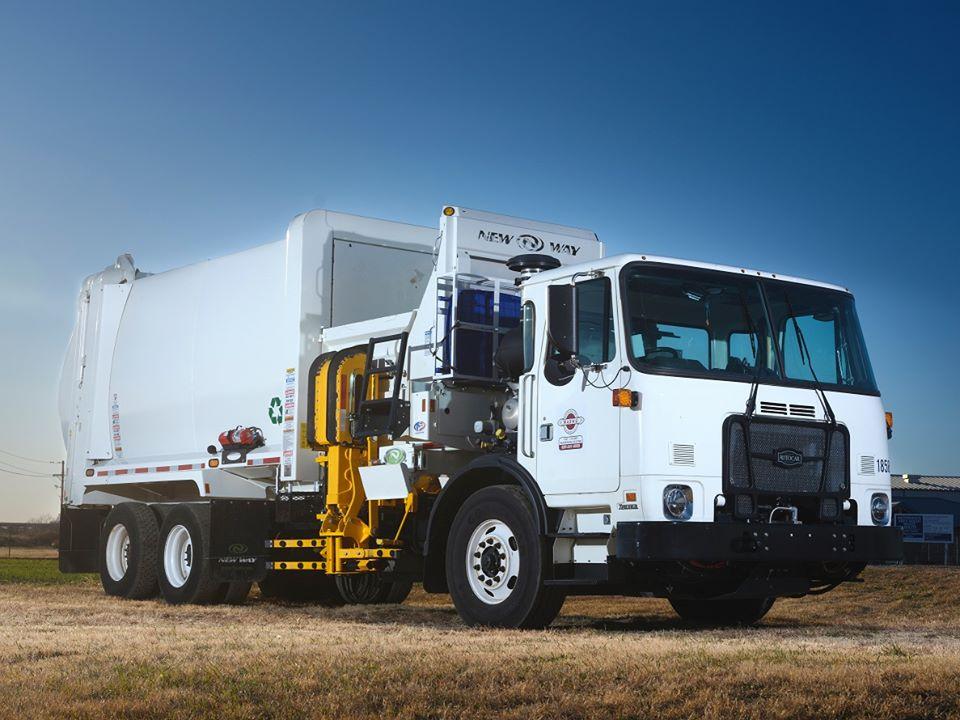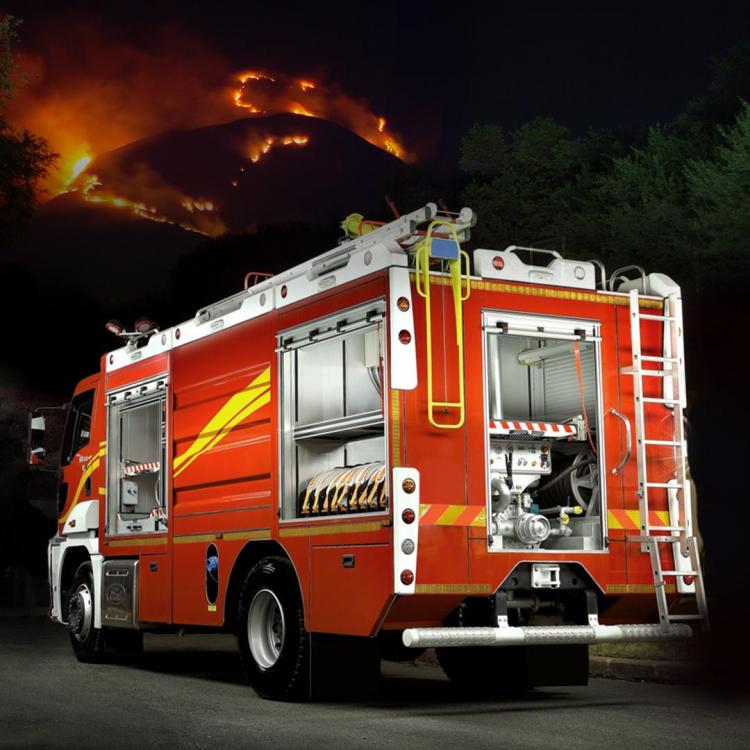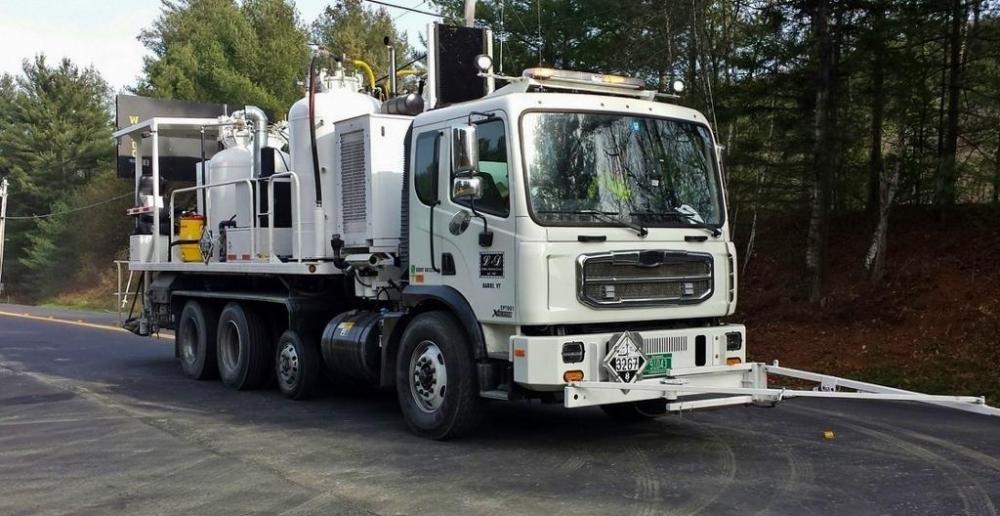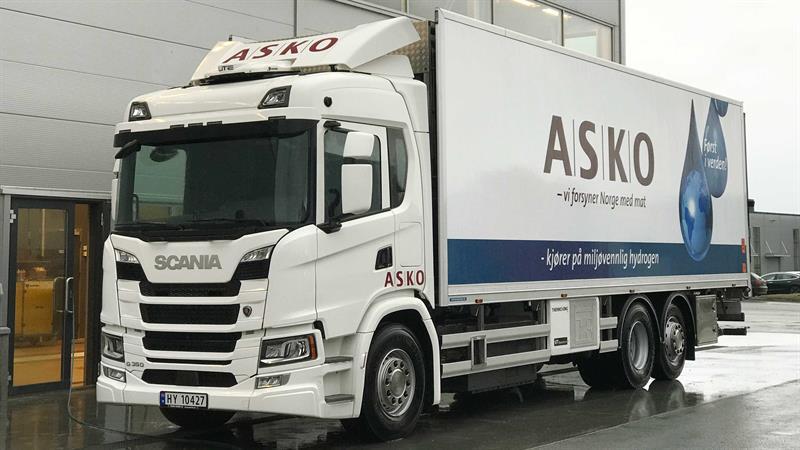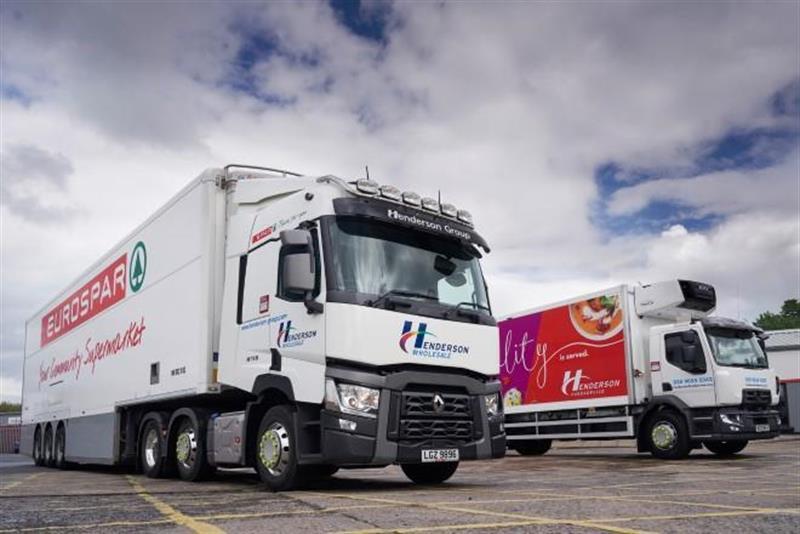
kscarbel2
Moderator-
Posts
18,885 -
Joined
-
Days Won
114
Content Type
Profiles
Forums
Gallery
Events
Blogs
BMT Wiki
Collections
Store
Everything posted by kscarbel2
-
Cummins Press Release / January 24, 2020 Cummins presence in the truck industry extends from all the way from the 2-ton Foton pickup featuring our compact F2.8 engine to the ultra-heavy MOL hauling 400 tons powered by the strength of the X15 engine – you can see how Cummins powers it all in China here: .
-
The ideal piston is the one your spec engine is supposed have. In your case, 240GC2246AM.
-
I lost count at how many times he says "uh". Not inspiring. .
-
Tennessee Supreme Court to hear fleet’s case against Navistar over MaxxForce EGR engines Matt Cole, Commercial Carrier Journal (CCJ) / January 22, 2020 The Tennessee Supreme Court will hear an appeal in a case between Tennessee-based Milan Express and Navistar, the maker of International Trucks, over alleged defects in the company’s MaxxForce engine line. In August 2019, an appellate court tossed a decision that required Navistar to pay Milan $30.8 million in damages to the fleet. Milan appealed the appellate court’s decision to the state’s highest court, which announced Jan. 16 it would hear the case. Milan, a roughly 400-truck fleet out of Milan, Tennessee, purchased 243 International ProStar tractors equipped with MaxxForce engines in 2011 and 2012. A jury in 2017 sided with Milan in the case, awarding the carrier $10.8 million for compensatory damages related to repairs for the engines and $20 million in punitive damages. A judge recently approved Navistar’s proposed settlement of $135 million that will be paid out to owners of certain International trucks equipped with defective model year 2011-2014 MaxxForce 11- or 13-liter engines. The Milan case has no bearing on the class action lawsuit. As part of the class action settlement, owners of affected trucks can choose to receive up to $2,500 in cash, up to a $10,000 rebate on a new Navistar truck with proof of ownership/lease, or up to $15,000 in repayment for repair costs for each affected truck they owned or leased.
-
Proudly made in #Alabama #USA. Proudly serving the City of Loveland - Public Works Department #Colorado. #Autocar #AlwaysUp #uptime #ROI #itsallabouttheuptime #madeintheUSA #AutocarSolutions City of Loveland, Colorado - Government
-
Autocar Trucks honored these 9 amazing truck building team members with a special luncheon today for achieving perfect attendance in 2019! Congratulations and thank you to David Barger, Brock Ellis, Kendall Geeslin, Alejandro Gonzalez, Shontel Johnson, Michael Layton, Joyce Lowe, Terry Reed and Bryan Thompson for their incredible commitment and loyalty. #AlwaysUp
-
Trump and Immigration (Illegal Immigrants in the US)
kscarbel2 replied to kscarbel2's topic in Odds and Ends
The White House Statement from the Press Secretary Regarding Birth Tourism Visa Regulation Rule Change Issued on: January 23, 2020 Beginning January 24, 2020, the State Department will no longer issue temporary visitor (B-1/B-2) visas to aliens seeking to enter the United States for “birth tourism” – the practice of traveling to the United States to secure automatic and permanent American citizenship for their children by giving birth on American soil. This rule change is necessary to enhance public safety, national security, and the integrity of our immigration system. The birth tourism industry threatens to overburden valuable hospital resources and is rife with criminal activity, as reflected in Federal prosecutions. Closing this glaring immigration loophole will combat these endemic abuses and ultimately protect the United States from the national security risks created by this practice. It will also defend American taxpayers from having their hard-earned dollars siphoned away to finance the direct and downstream costs associated with birth tourism. The integrity of American citizenship must be protected. -
Ford expects $2.2 billion Q4 hit due to pension plans Michael Martinez, Automotive News / January 22, 2020 DETROIT -- Ford Motor Co. on Wednesday said it will take a fourth-quarter financial hit of about $2.2 billion for how it accounts for liabilities on employee pension plans and retirement benefits. The automaker, in a filing with the Securities and Exchange Commission, said the hit includes a $2 billion loss associated with pension plans outside the country. It also includes a $600 million loss associated with post-retirement employee benefit plans globally, although that was partially offset by a $400 million gain associated with pension plans in the U.S. Overall, Ford said the "remeasurement loss" on pension liabilities is expected to reduce its quarterly net income by about $1.7 billion, although Ford said it will not impact its total adjusted earnings before interest and taxes figure or adjusted earnings per share. Ford noted it accounts for pension remeasurement gains and losses when they occur, rather than amortizing those results over time. The automaker will report fourth-quarter and full-year earnings Feb. 4. Ford said the unfunded status of its pension funds grew to $6.8 billion at the end of 2019, up from $6.3 billion at the end of 2018. Unfunded postretirement liabilities grew to $6.1 billion in 2019 from $5.6 billion, Ford said. CFO Tim Stone in October said Ford expected total 2019 earnings before interest and taxes of $6.5 billion to $7 billion, down from its earlier projection of $7 billion to $7.5 billion. That would represent a decline from the $7 billion earned in 2018.
-
This model is marriage material. January #Autocar calendar features a McPherson Area Solid Waste Utility #ACX chassis w/ New Way Trucks #Sidewinder #ASL. #McPherson #Kansas Justin Lister Photography #AlwaysUp #MASWU #uptime #itsallabouttheuptime #safety #sideloader #garbagetruck #automatedsideloader
-
On the subject of airbags..................... --------------------------------------------------------------------------------------- Toyota recalls 3.4 million vehicles because TRW airbags won’t deploy Reuters / January 21, 2020 WASHINGTON -- Toyota is recalling 3.4 million vehicles worldwide because of an electronic glitch that can result in airbags not deploying in crashes. The recall, which includes 2.9 million U.S. vehicles, covers 2011-19 Corolla, 2011-13 Matrix, 2012-18 Avalon and 2013-18 Avalon Hybrid vehicles. The vehicles may have an electronic control unit that does not have adequate protection against electrical noise that can occur in crashes, which could lead to incomplete or non-deployment of the airbags. It could also impede the operation of seat-belt pretensioners. The National Highway Traffic Safety Administration (NHTSA) in April expanded a probe into 12.3 million potentially defective airbags covering a number of automakers, including the vehicles Toyota is recalling. NHTSA said in April it had identified two frontal crash events, including one fatal crash "involving Toyota products where (electrical overstress) is suspected as the likely cause" of airbags not deploying. Both involved newer Corolla cars. NHTSA said the TRW airbags under investigation were installed in more than 12 million vehicles from 2010 through 2019 sold by Toyota, Fiat Chrysler Automobiles, Honda Motor Co., Hyundai Motor Co., Kia Motors Corp. and Mitsubishi. They were equipped with an airbag control unit initially produced by TRW Automotive Holdings Corp., which is now owned by ZF Friedrichshafen. In total, NHTSA said as many as eight deaths could be tied to the issue. Hyundai, Kia and Fiat Chrysler previously issued recalls for more than 2.5 million vehicles with the TRW airbag control units in question that might not deploy in crashes. When it recalled nearly 2 million vehicles for airbag non-deployments in 2016, Fiat Chrysler said it had reports of three deaths and five injuries that might be related to the defect. Hyundai and Kia ultimately recalled more than 1 million vehicles for airbag non-deployment concerns in 2018. Hyundai and Kia in 2018 said they had reports of four deaths and six injuries in North America tied to the issue. Toyota dealers will install a noise filter between the airbag control module and its wire harness if needed. Toyota declined to say how many deaths or injuries have been tied to the defect. Toyota will notify vehicle owners of the recall by mid-March. On Wednesday, Toyota said it is recalling 361,000 older vehicles worldwide for potentially defective air bag inflators. The defect involves a different type of Takata inflator than those that have prompted the largest-ever auto safety recalls worldwide covering more than 42 million U.S. vehicles by 19 automakers with Takata air bag inflators. Honda Motor Co. said on Tuesday it will recall 2.7 million older U.S. vehicles in North America for the same type of Takata inflator that Toyota is also recalling. Toyota's new recall covers some 1998-2000 Toyota RAV4, 1998-99 RAV4 EV, 1998-99 Celica and 1997-98 Model Year Supra vehicles with a non-azide front driver airbag inflator, including 139,000 in the United States.
-
Trump praises Musk, wants to protect 'genius' Bloomberg / January 22, 2020 President Donald Trump on Wednesday marveled at the success of Elon Musk, along with automaker Tesla and his rocket company, SpaceX. “He does good at rockets too, by the way,” the president said of Musk. “I never saw where the engines come down with no wings, no anything, and they’re landing.” Trump expressed surprise at Tesla’s resurgence since overcoming manufacturing difficulties with its Model 3 sedan last year. “I was worried about him, because he’s one of our great geniuses, and we have to protect our genius,” Trump said. “You know, we have to protect Thomas Edison and we have to protect all of these people that came up with originally the light bulb and the wheel and all of these things.” Trump indicated he had taken note of the recent surge in Tesla’s stock price after it reported a surprise quarterly profit and opened a factory in China. Tesla’s market value climbed above Volkswagen AG’s for the first time to more than $100 billion. “I mean, you go back a year and they were talking about the end of the company,” Trump said. “And now all of a sudden they’re talking about these great things.” Trump also said he expects Tesla to build another plant in the U.S..
-
-
#Autocar custom engineers trucks for all sorts of demanding vocations. Check out this #ACMD paint striper. Learn how your heavy-duty fleet can benefit from more #uptime & #ROI: https://lnkd.in/eR-i8hv #AlwaysUp #itsallabouttheuptime #AutocarSolutions
-
Transport Engineer / January 21, 2020 Norwegian food wholesaler ASKO is trialling four electric trucks powered by hydrogen fuel cells in a pilot venture with Scania. Scania’s modular approach sees the internal combustion engine replaced by an electric unit, powered by electricity from fuel cells fed with hydrogen and from rechargeable batteries. The electric powertrain delivers 290kW/210kW continuous output, with up to 2,200Nm of torque through a two-speed transmission. The rest of the powertrain contains the same standard components used in the manufacturer’s hybrid trucks and buses already available on the market. The 26-tonners on trial with ASKO have a 6×2*4 configuration and installed lithium-ion battery capacity of 56kWh. The 22kW AC on-board charger has a CCS charging interface. Hydrogen storage capacity is 33kg at 350bar, and the vehicles have an estimated range of between 400km and 500km. Scania says this pilot will be the basis for further learning and development for both companies. “Hydrogen gas is an interesting option for long haulage electrified transport and early tests show that the technology also works well in colder climate,” says Karin Rådström, the truck maker’s head of sales and marketing. .
-
- 1
-

-
Transport Engineer / January 17, 2020 Northern Ireland-based The Henderson Group has taken delivery of 15 Renault Range T460 and 14 Range D18 vehicles, citing vehicle quality and “exceptional” driver acceptance as reasons for the deal. Supplied by dealer Diamond Trucks, the vehicles operate on multi-drop distribution operations for the group’s retail franchises, which include Spar, Eurospar and ViVO. The latest additions are part of Henderson’s strategy to move from a mixed fleet to standardising on two key marques. “We introduced the Range T and D in 2015, with seven Range T460 6x2s and a Range D26 fridge, and we haven’t looked back,” says David McCracken, group fleet engineer. “Renault Trucks is now one of our preferred suppliers and business partners. We operate some 70 of its vehicles across our various divisions and forecast further investment in the Renault product by the end of 2020.” He cites positive experience, vehicle reliability and driver acceptance as factors in the decision to add more Renault vehicles, which he describes as “the perfect truck – reliable, stylish and comfortable to drive”. The Range T vehicles are doing 70 runs a day, both ambient and chilled, and McCracken says the model “offers the best compromise in terms of reliability, mpg, size of cab and driver appeal”. The Range Ds, meanwhile, are a mix of 26- and 18-tonners, and are working within the group’s wholesale and foodservice divisions. The Range D’s compact size and tight turning circle is said to be “perfect” for these duties. Henderson has acquired the Range Ds outright, with the Range Ts supplied on a four-year contract hire deal through BRS. All vehicle maintenance is carried out by Diamond Trucks. .
-
Diesel News Australia / January 2020 After a year when there were signs of some changes in the Australian truck market, 2019 ended with the situation where Isuzu and Kenworth are still on top of the rankings. Isuzu came through with 22.7 per cent of all trucks sold in the year, while Kenworth still predominate with 18.5 per cent of heavy duty truck sales, in the Truck Industry Council sales results for 2019. After selling 2350 Kenworth keeps its place as the heavy duty number one, but Volvo have been snapping at the brand’s heels throughout 2019, coming out with a grand total of 2239 heavy sales for 2019 just 111 trucks behind over the 12 months. In fact, Volvo outsold Kenworth in heavy duty, in May, June, August and September. Volvo has closed in from 1,088 truck sales in arrears in 2018, although back in a much quieter year, 2016 the end of year number saw Kenworth just 190 trucks ahead. In fact, the lead for Kenworth over Volvo has seen the Paccar-owned brand keep the Swedish company in a perennial second place by around 500 to 1000 trucks for most of the last ten years. The question is whether the closer numbers from 2019 represent a real structural change in the Australian truck market as operators move across from conventional US trucks to cabover Europeans. Volvo haven’t been the only ones to gain from a change, both Scania and Mercedes Benz have seen substantial increases from historic averages, in recent years. The jury is still out on this one, and the figures for 2020 will show us just how much sentiment has changed. Kenworth will have more of its T410, T610 style trucks coming through and Freightliner will be pushing the new Cascadia hard. At the same time, the European cohort will be preaching the whole of life costs and low fuel consumption their product can offer. In the overall Australian truck market, Isuzu Trucks finished 2019 as clear leaders, with 22.7 per cent share of the Australian truck market and a total of 8,621 units sold It also continues to lead the way in the light-duty segment, with 4,207 units sold for 36.6 per cent share and in medium duty, Isuzu Trucks again took line honours, finishing the year with 2,896 units sold for 39.1 per cent share of the market. At the heavy end, Isuzu continues to hold on to third spot, with 1,518 units sold for 11.9 per cent share of the market in which the Kenworth /Volvo tussle was playing out. On achieving 31 years of market leadership, Isuzu Director and Chief Operating Officer, Andrew Harbison, said, “Off the back of an unprecedented boom in 2018, we continued to strive forward and push our strengths in 2019. I’d like to thank and congratulate our tireless dealer network for their unrelenting efforts. “As always, it’s their hard work and commitment to the Isuzu product and ethos that keeps us top of mind with Australian customers.”
-
Scania Group Press Release / January 16, 2020 Scania’s axle and gearbox plant is readying itself for mass production of the battery electric powertrain. E-mobility has now come to Scania’s axle and gearbox assembly workshop in Södertälje. With three gearbox prototypes a week being produced for the new battery electric powertrain, technicians and operators are fine-tuning their skills and knowledge in anticipation of the start of customer production this year. “It’s exciting to work with future technology,” says operator Fredrik Angenent. “It’s also very different from normal assembly here at the workshop. On the assembly line, we put together a part of the product whereas here we assemble the battery electric gearbox from scratch.” An electrification journey Angenent and his colleagues assemble the electric machine and gears, axles and high voltage cables to produce a complete gearbox. In total, the electric gearbox consists of approximately 200 components, which substantially fewer than for a combustion engine. The finished product is subsequently tested in an adjacent rig. “We’ve been planning production for three years, gradually building the assembly line,” says Catarina Hemning, supervisor at eMobility gearbox assembly. “Now we feel prepared for higher volumes.” Test Development Engineer Thomas Ekbäck, who helped design the test rig, says that Scania has been on an electrification journey: “We’ve learned loads along the way and there’s still more to learn. But we’ve reached sufficient maturity to provide the market with a competitive electrical gearbox for battery electrical vehicles.”
-
MAN Truck & Bus Press Release / January 13, 2020 Introducing the new fully electric MAN Lion's City E to the harbor city of Hamburg, where the busses will be supporting public transport's daily operations and contributing to a cleaner, brighter future. .
-
And yet ten years later, we have a similar outcome, with Troy Clarke having switched seats, from GM to Navistar. https://www.bigmacktrucks.com/topic/51205-chevrolet-class-456-silverado/
-
Remembering GM’s Parade of Progress" Road Show
kscarbel2 replied to kscarbel2's topic in Other Truck Makes
General Motors "Parade of Progress" original brochure. https://www.gmheritagecenter.com/docs/gm-heritage-archive/Featured-Innovations/1953_GM_Parade_of_Progress.pdf
BigMackTrucks.com
BigMackTrucks.com is a support forum for antique, classic and modern Mack Trucks! The forum is owned and maintained by Watt's Truck Center, Inc. an independent, full service Mack dealer. The forums are not affiliated with Mack Trucks, Inc.
Our Vendors and Advertisers
Thank you for your support!


